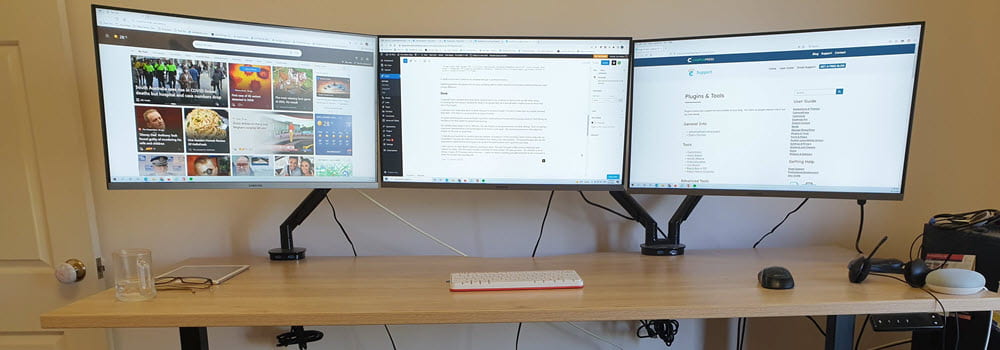The shift from classroom based delivery to workplace delivery and workforce development means VET lecturers will need tools to ensure greater mobility. I don’t believe that one size will fit all; individual preferences and varying workplace environments circumstances will need different solutions. However I do believe that you need to start by focusing what is your desired outcome and then focus on the technology. Too often we focus on a piece of technology and then try to make it meet what we are trying to achieve.
Here are some ideas for reducing the amount of paperwork and equipment you need to carry when you need to be really mobile:
Video ipod
- Attach an Audio/Video cable for iPod. Now you can play movies on your ipod on a TV or a data projector (and the quality of the movies is really good!). You could even convert your PowerPoint into movies so that you can have mobile PowerPoint. You will need to change movie output on your iPod. Start iPod. Go to Movies>Video Settings change TV Out to Ask. Thanks Richard Meagher for showing me that iPods can do this
- Attach an FM transmitter to the iPod and it will play music through the radio. Catch up on some learning by listening to some podcasts while you drive (or remain calm by listening to your own music)
PDA with inbuilt phone
With this type of PDA you have phone, inbuilt camera/video (approx. 2 megapixel) Internet access, email, organiser for appointment/contacts, mobile office with pocket versions of Word & Excel (both with reduced features compared to standard Office) and mobile PowerPoint (can not edit on PDA unless you install Pocket Conduit Slides which is a 3rd party application). Hardware like the infraBLUE IRMA Bluetooth Presenter is required if you want to run PowerPoint from your PDA on a data projector.
When I go to meetings or seminars I do not write on paper instead I write all my notes in Word (using transcriber) on my PDA (e.g. On Monday I wrote 3 pages of notes on my PDA at an all day seminar. Monday night I then transferred notes to PDA and could then read through them). I am also able to read/respond to my emails and Google information while I sat listening to presentations.
For Australians make sure you buy a 3G device or you will be paying a lot to use the Internet and access your emails.
Workplace Assessing
If you are wanting to reduce the amount of assessment paperwork you carry there is are several options. If you have to manage a large number of students a database that manages their contact details, records any contact, manages assessment outcomes and contains assessment checklist is the way to go. Now all you need to do is choose a device.
| Device | Advantages | Disadvantages |
| Ultra Mobile PC (UMPC) 7″ display | Extremely small (size of portable DVD player) Runs standard windows operating system Able to write on screen Can run Access database | Relatively new technology Some of the early models had overheating problems Cost (e.g. ASUS is $1,999) Poor battery life (2-3 hours) may be an issue depending on the work environment |
| Slate Tablet PC | Larger than a UMPC i.e. larger screen display Runs standard windows operating system Able to write on screen Can run Access database Normally has a lot better battery life than a UMPC | Cost Bulkier than a UMPC or PDA i.e. less mobile |
| PDA | Smaller than a UMPC Highly mobile Less expensive in terms of hardware Good battery life | Will need a basic PDA with good processing speed (i.e. no inbuilt phone or camera) – approx. $600 Will need 3rd party application like Visual CE to run database on PDA Ideally need to daily sync PDA with desktop PC database Information can be inputted on PDA but all assessment checklist need to be set up on desktop PC Can have problems with syncing PDA database with database on PC |
I personally DO NOT believe that a PDA with a Visual CE assessment database is THE SOLUTION.




Leave a comment